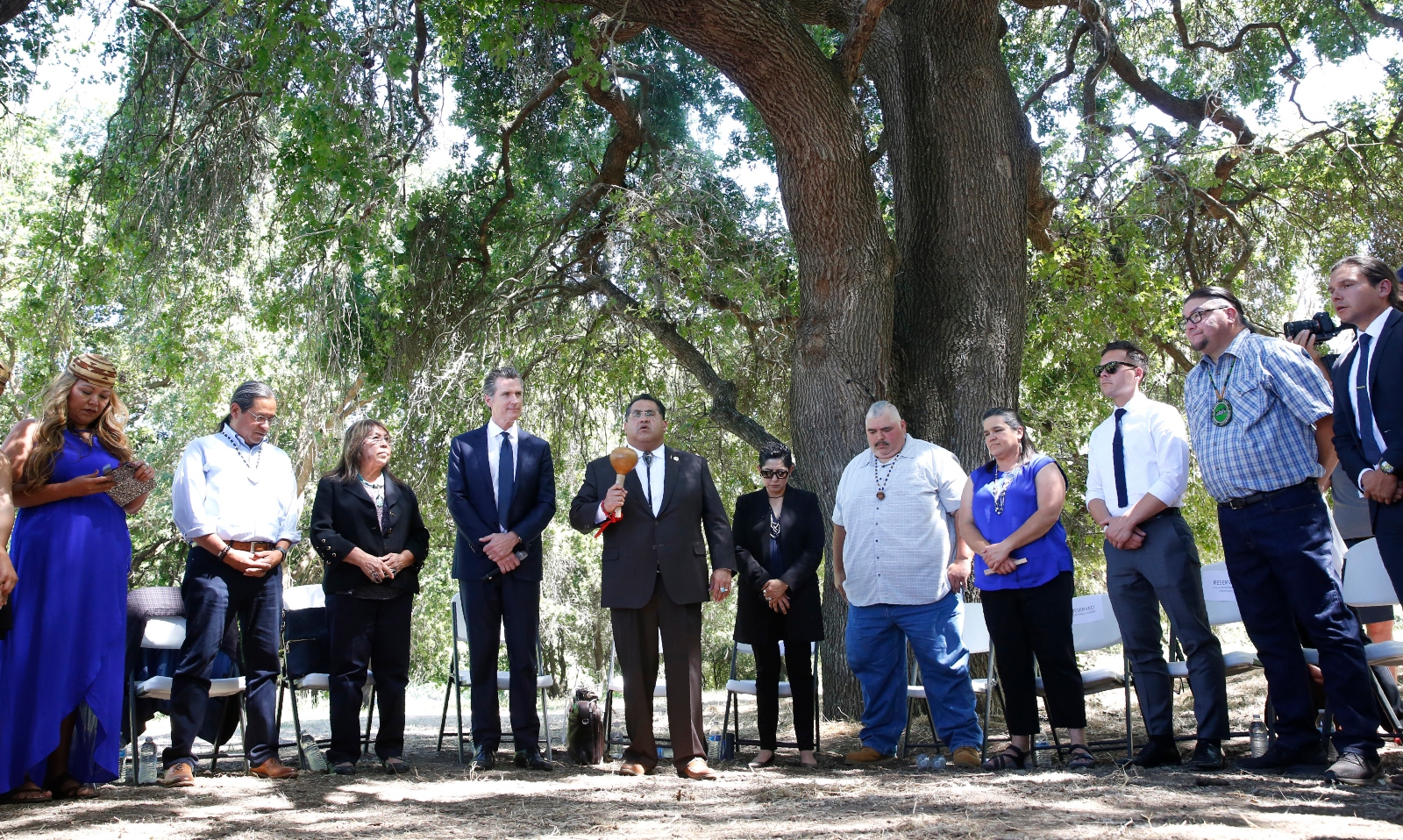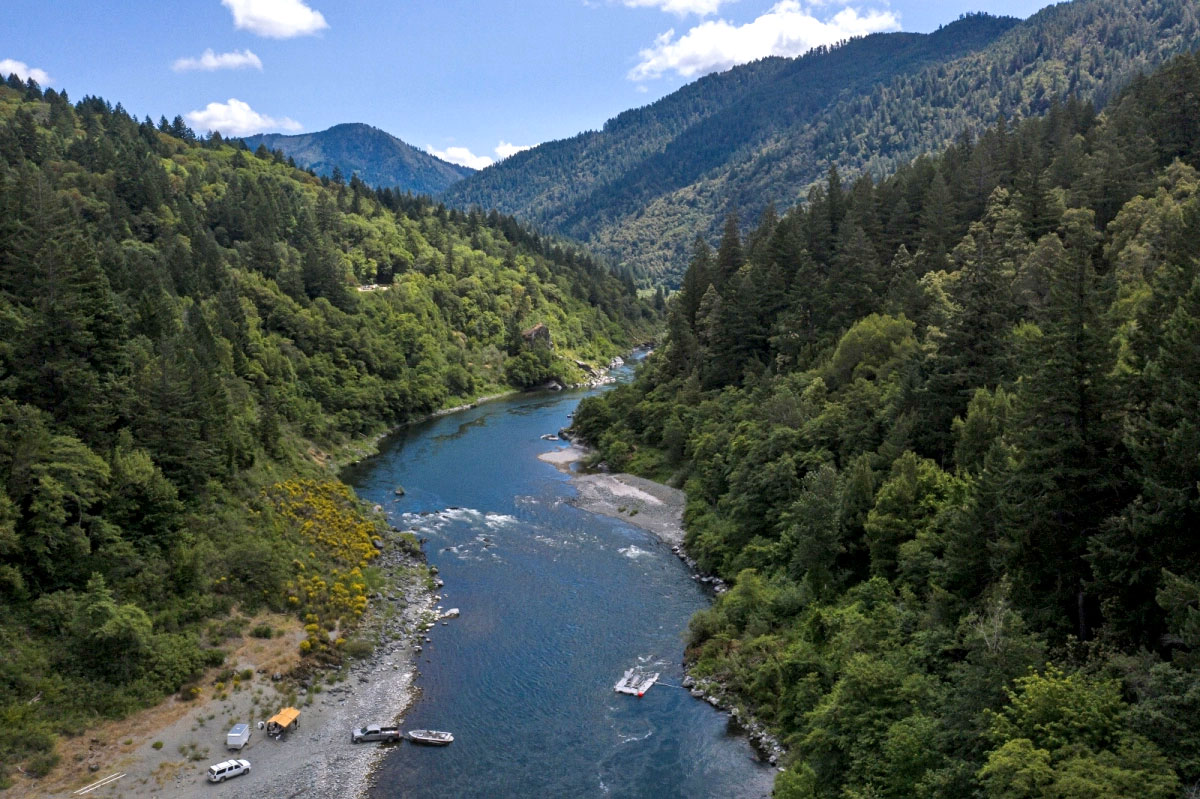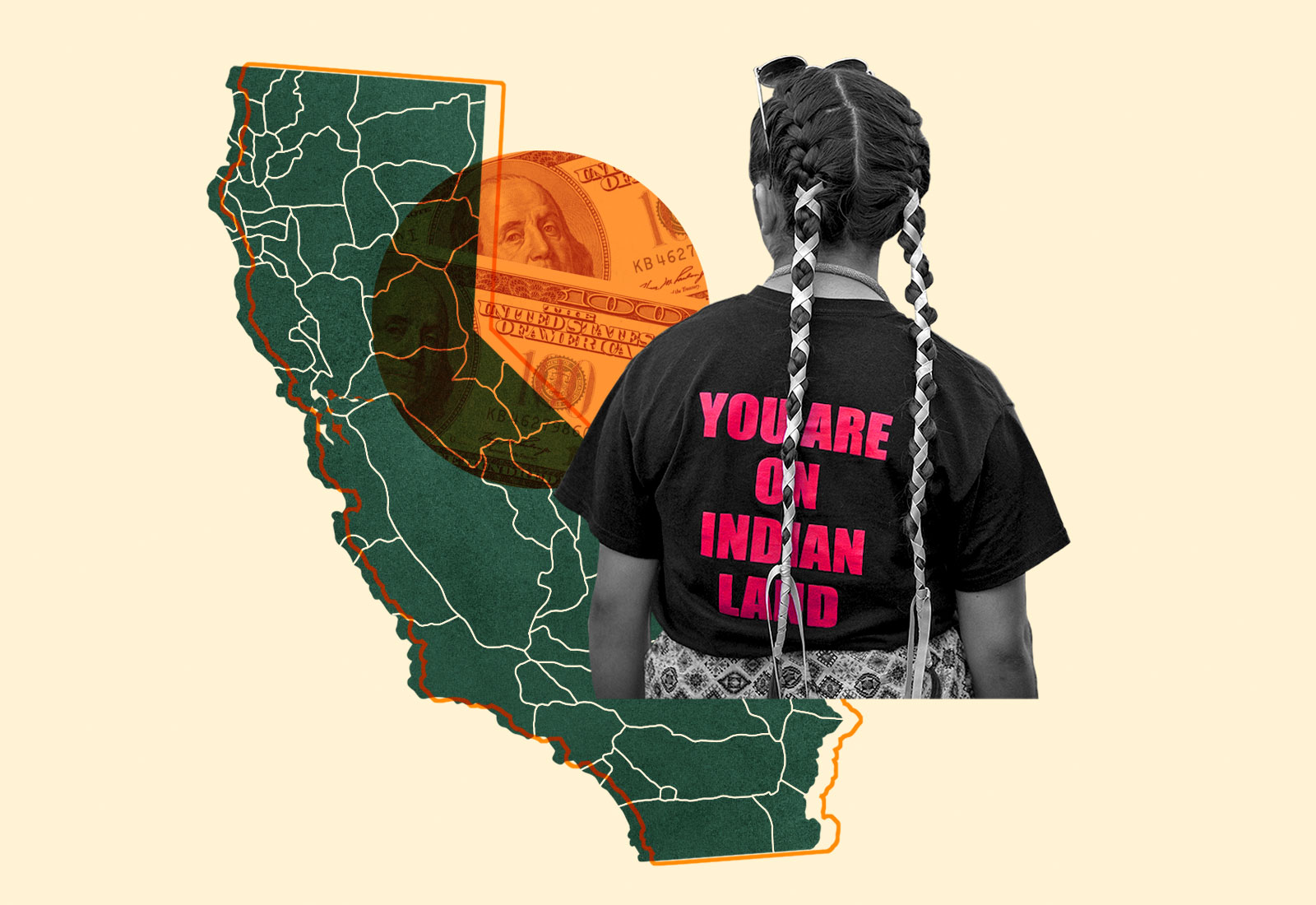When he was 10 years old, Terry Supahan’s mom bought him a new bike. Supahan, a member of the Karuk Tribe in Northern California, had only ridden second hand bikes before. A hundred years earlier, the state of California had stolen millions of acres of land from his tribe and more than a hundred others. In 1968, the state sent checks to individual Indigenous people to pay them back. Supahan’s mom used the money she received — about $100 he recalls — to buy the bike, a moment that Supahan remembers fondly, but laughs at now. How could a bicycle compare to millions of acres of stolen land?
The check was part of a $29 million land settlement for roughly 65 million acres of land — two-thirds of the entire state — stolen from Indigenous people. That works out to less than 50 cents per acre, a price unheard of even in the 19th century, when the United States first began gobbling up Indigenous land.
Now, California Governor Gavin Newsom wants to send out more money to Indigenous people, this time to buy back and conserve some of that stolen land — $100 million for nearly 200 tribes. The proposal is part of Newsom’s goal to conserve 30 percent of the state’s land and waters by 2030, with tribal partners playing a crucial role.
“I’ve tasked our administration with seeking out ways to support California Native peoples in accessing, co-managing, and acquiring your ancestral lands,” said Newsom in a meeting with the state’s Indigenous Truth and Healing Council, a group of tribal leaders who are examining the state’s treatment of tribes and making recommendations for reparation. “Today we’re making a down payment on this commitment.”
Newsom’s announcement comes in the middle of an attempt by California to repair relations with Indigenous people after centuries of genocide. The effort began in earnest in 2019, when Newsom apologized to Indigenous communities on behalf of the state for California’s long history of violence, discrimination, and land theft. The buy-back announcement also comes amid the growing landback movement, but has elicited mixed reactions from Indigenous leaders.

“It’s a baby step in the right direction, but I have a lot of questions,” said Joely Proudfit, a descendant of the Pechanga Band of Luiseño Mission Indians and the director of the California Indian Culture and Sovereignty Center at Cal State San Marcos.
On the one hand, experts say, the $100 million program could help tribes conserve land and serve as a pilot for future programs in California and other states. The money could make an important impact on tribes’ capacity to protect the environment. On the other, it could quickly run out of money and lead to few meaningful changes, eventually becoming another empty gesture on behalf of the state.
Today, Terry Supahan is executive director of the True North Organizing Network, a social justice group that is working with tribes to reclaim land, among other projects. He says Newsom’s proposal is welcome but that the state must do more. “As much as I believe the governor’s initiative is an important step in the right direction, it is not enough,” he said. “There’s just too many wrongs that are going to have to be addressed.”
In California, a violent colonial history has left many tribes fragmented and underfunded, and both tribes and the state say returning control to Indigenous people to continue stewardship is crucial to protecting and preserving the environment. Indigenous people have been recognized as the best caretakers of land around the world. According to the United Nations, although Indigenous people are only five percent of the world’s population, their land contains 80 percent of the world’s biodiversity.
But there are more than 100 federally recognized tribes in the state and at least 70 unrecognized tribes and communities. California also has some of the most expensive real estate in the country. In a state where the median home price is around $800,000, $100 million will only go so far. And previous landback efforts have also proved expensive. Recently, the Wiyot Tribe used a $1.3 million grant from the state to buy back 48 acres of land, while the unrecognized Esselen Tribe used a $4.5 million grant to purchase more than 1,000 acres of land.
“Let’s face it, this is California: $100 million goes nowhere,” Proudfit said. “It’s a drop in the bucket.”
With real estate prices so high, it’s worth asking why the state doesn’t just give land directly back to tribes. Wade Crowfoot, California’s secretary for natural resources, said that direct transfer is a mechanism the state is exploring, specifically in the north, where the planned removal of four dams on the Klamath River may create surplus land that could be transferred to the Yurok and Karuk Tribes. But California owns relatively little land, roughly 3 percent of the state, while the remainder is more or less evenly split between the federal government and private owners. So in the absence of large chunks of available state land, and without clear legal mechanisms for distributing it to tribes, a landback fund would allow tribes to acquire privately held properties.

The program, which is part of the governor’s annual budget proposal, will need to be approved by the state legislature in June and would be managed by the California Natural Resources Agency. The governor has not released any details on how the money would be allocated and which limitations might be placed on it. Members of the state’s Truth and Healing Council have raised concerns about the proposal creating conflict between tribes competing for limited land and questions about how the money would be distributed to unrecognized tribes. Crowfoot acknowledges that there are many open questions about how the program will work.
“I don’t want to oversell,” he said. “This is complex and unprecedented. There’s a lot that we’re going to learn along the way.”
California has a uniquely brutal story in the history of American colonization. Peter Burnett, the first governor of California, declared in 1851 that “a war of extermination will continue to be waged between the two races until the Indian race becomes extinct.” Under Burnett and subsequent leaders, California sponsored militia-led massacres across the state, enslaved Indigenous people, and tried to erase their culture. The federal government also stole Indigenous land through 18 treaties made with Indigenous nations that were never honored and have still not been ratified by Congress.
Under Newsom’s proposal, the money could also be used to help tribes implement climate adaptation programs or hire staff. Michael Hunter, chairperson of the Central California Tribal Chairpersons Association and chairman of the Coyote Valley Band of Pomo Indians, says that the governor’s proposal is a “great concept” but that the challenge will be in its execution. Working with state agencies and navigating the bureaucratic process could take years, he said. “Until we follow through to change the direction the environment is going, landback is just landback. But if we do it properly, we could turn the cycle around in California,” he said.
Hunter, who recently organized a rally to urge the state to sign a co-management agreement with Pomo tribes for Jackson Demonstration State Forest, is encouraging the state to transfer as much state land to tribes as possible. Financial support, he believes, could best be used to help maintain those lands. Tribes, he says, have the solutions to climate change. The state just needs to get out of their way.
Crowfoot, who is not Indigenous, said that Newsom’s 2019 apology was “powerfully symbolic” but required action to become meaningful. The new proposal, he believes, is an example of that action. Crowfoot says that he is focused on making this initial funding successful to pave the way for future investment. “I’m confident that if this funding proves to be effective in terms of building tribal leadership on conservation, that additional funding would be allocated in the future,” he said.
But California could certainly afford a bigger commitment now. The state is currently expecting a budget surplus of $45.7 billion, $20.6 billion of which is in a general fund for discretionary purposes.
Whatever happens, Terry Supahan hopes that this proposal will lead to more meaningful investment than a new bicycle.



